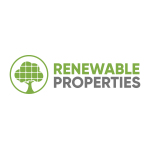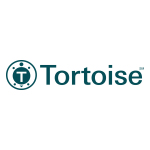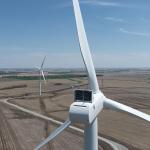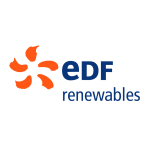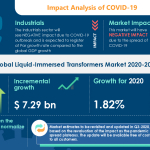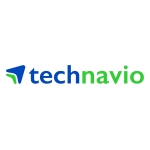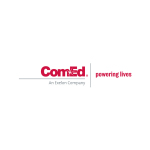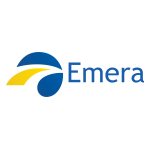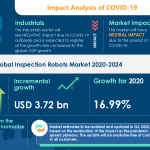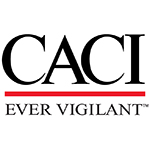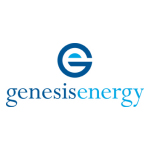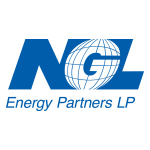Second Quarter 2020 Overview:
- Consolidated revenues were $135.4 million; COVID-19 negatively impacted all segments by delaying anticipated projects
- GAAP consolidated operating loss was $7.7 million; GAAP loss from continuing operations was $18.1 million, a $10.2 million improvement compared to second quarter 2019
- Consolidated adjusted EBITDA was $1.4 million
- The Babcock & Wilcox segment reported adjusted EBITDA margin of 9.1% as compared to 9.5% in second quarter 2019, while segment adjusted gross profit margin improved to 27.9% compared to 18.8% in second quarter 2019
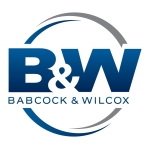
Growth Initiatives:
- Company launched B&W Environmental, B&W Renewable, and B&W Thermal brands as part of a strategic, market-focused organizational and re-branding initiative to accelerate growth and provide stakeholders improved visibility into its renewable and environmental growth platforms
- Company is expanding its sales, service and business development team in key international markets to capitalize on more than $5 billion in identified project opportunities over the next three years, with a focus on bidding renewable and environmental projects world-wide
AKRON, Ohio--(BUSINESS WIRE)--$BW #BabcockWilcox--Babcock & Wilcox Enterprises, Inc. ("B&W" or the "Company") (NYSE: BW) announced second quarter 2020 GAAP loss from continuing operations of $18.1 million, an improvement of $10.2 million compared to second quarter 2019. Adjusted EBITDA was $1.4 million compared to adjusted EBITDA of $8.2 million in the prior year period, primarily driven by the adverse impacts of COVID-19 across all segments and the completion of several large construction projects in the Babcock & Wilcox segment.
Strategic Organizational and Re-Branding Initiative Overview
The Company also announced plans to align its market-facing segments and financial reporting under three new brands--B&W Environmental, B&W Renewable and B&W Thermal--that better reflect its core markets, products and strategies. The re-branding is expected to improve the Company's organizational structure to support its growth as B&W expands its global sales team and geographic presence and pursues strategic investments in new technologies. As part of the re-branding of its product and service offerings, B&W's new branding is designed to highlight its comprehensive offerings and unique market position to support sustainable energy and industrial infrastructure. The Company's market-facing strategy and branding take effect immediately, and B&W expects to begin reporting its financial results under these new segments starting with its full-year 2020 results.
As part of this initiative, B&W has named Jimmy B. Morgan as Chief Operating Officer, effective immediately. In this role, Morgan will be responsible for the Company's strategic and operational performance under each of the new brands and growth platforms. Morgan joined B&W in February 2016 and most recently held the position of Senior Vice President, The Babcock & Wilcox Company, leading B&W’s aftermarket, new-build and environmental products and services businesses world-wide.
Management Commentary
“Despite the challenges presented by COVID-19, this is an exciting time for B&W," said Kenneth Young, B&W's Chief Executive Officer. "Following the financing agreement we announced in May, we’re moving forward with our strategy to achieve long-term growth and leverage market trends. Our organizational re-alignment and re-branding reflect our mission to provide renewable energy and environmental solutions to customers around the world as we leverage our global strengths and proven, industry-leading technologies. We expect growth from our expanding global pipeline and improved operational execution to drive significant earnings growth throughout 2021 and beyond.”
“We recognize that the world is rapidly changing," Young continued. "The B&W of today and of tomorrow is focused on meeting customer and market needs by providing technology solutions to help achieve a clean, sustainable energy and industrial infrastructure. While COVID-19 has negatively affected our anticipated bookings and project timing, pushing projects we expected to begin in 2020 into 2021 and beyond, our pipeline is rapidly expanding, representing over $5 billion of identified project opportunities that we expect to bid in the next 3 years, not including shorter lead-time parts sales. This pipeline is focused on renewable energy, environmental solutions and advanced technologies to deliver value to our core energy and industrial customers."
"In addition, we are expanding our sales and business development team in key international markets, including the Middle East, Africa and Asia-Pacific regions, to help identify, capitalize on and execute the key growth opportunities that these regions offer. We are opening several offices in each region, including regional headquarters in Dubai, United Arab Emirates and Perth, Australia, and hiring business development, field service, and sales engineering personnel to support our growth. Globally, the market for our technologies is growing significantly. This includes the markets for new waste-to-energy facilities, advanced thermal technologies and improved environmental standards. The initiative we’ve announced today better positions us to capitalize on those opportunities,” Young concluded.
Louis Salamone, B&W's Chief Financial Officer, commented: "Notwithstanding the challenges of COVID-19 and an operating loss on a GAAP basis, we closed the second quarter of 2020 with positive adjusted EBITDA, due to the dedication and experience of our management and employee team, and the implementation of changes throughout our operations in response to the pandemic. As an essential business, we continue to focus on managing our costs and cash flow through this crisis to support our customers in the long-term. While we expect deferrals and delays of certain projects to affect our performance throughout 2020, based on information from our customers we currently anticipate the majority of deferred projects to re-mobilize in late 2020 and through 2021. In addition, we've continued our focus on reducing SG&A and as a result reduced consolidated SG&A expense by $7.5 million, a 17.8% improvement compared to second quarter 2019. "
"Looking toward the future, our focus is on winning and executing quality projects and aftermarket services to serve our customers' needs for renewable energy, environmental solutions and efficient operations," added Jimmy Morgan, B&W's Chief Operating Officer. "We believe we have the technologies, expertise and opportunities to expand our renewable and environmental platforms significantly in the next few years. In my new role, I'm looking forward to helping drive our growth as the next generation B&W."
Results of Operations
The Company's focus on core technologies and profitability, combined with the adverse impacts of COVID-19, were the primary drivers of a decline in revenue in the second quarter of 2020 compared to the second quarter of 2019. Consolidated revenues in the second quarter of 2020 were $135.4 million compared to $248.1 million in the second quarter of 2019. Revenues for each of B&W's segments were negatively impacted by COVID-19.
The GAAP operating loss in the second quarter of 2020 was $7.7 million, inclusive of restructuring and settlement costs and advisory fees of $4.4 million, compared to an operating loss of $4.3 million in the second quarter of 2019. This decline was primarily due to a decrease in revenue across all segments as described below, as well as unfavorable product mix in the SPIG segment, partially offset by the impacts of costs savings and restructuring initiatives in the Babcock & Wilcox segment and lower levels of direct overhead support and SG&A in the Vølund & Other Renewable segment. Adjusted EBITDA declined to $1.4 million compared to $8.2 million in the second quarter of 2019. All amounts referred to in this release are on a continuing operations basis, unless otherwise noted. Reconciliations of operating income, the most directly comparable GAAP measure, to adjusted EBITDA, as well as to adjusted gross profit for the Company's segments, are provided in the exhibits to this release.
Babcock & Wilcox segment revenues were $104.8 million in the second quarter of 2020 compared to $201.0 million in the prior-year period. The decrease is attributable to the completion of several large construction projects that were active in the prior year period and the adverse impacts of COVID-19, including lower volume related to customers' concern regarding its duration and magnitude, and delays in large orders. Adjusted EBITDA in the second quarter of 2020 was $9.5 million compared to $19.1 million in last year's quarter, primarily due to the decrease in revenue volume. This was partially offset by the results of costs savings and restructuring initiatives. Adjusted EBITDA margin was 9.1% in the quarter as compared to 9.5% in the same period last year. Adjusted gross profit in the second quarter of 2020 was $29.3 million compared to $37.9 million in the prior-year period, consistent with the decrease in Adjusted EBITDA. Adjusted gross profit margin was 27.9% compared to 18.8% in the same period last year, primarily due to favorable mix, higher parts margins and the benefits of costs savings and restructuring initiatives partly offset by the decrease in revenue.
SPIG segment revenues were $10.9 million in the second quarter of 2020 compared to $22.8 million in the second quarter of 2019. The decrease was primarily due to the postponement of new projects by several customers as a result of COVID-19. Adjusted EBITDA was $(2.5) million compared to $(0.1) million in the same period last year, driven primarily by the impact of COVID-19. Adjusted gross profit declined to $0.3 million in the second quarter of 2020, compared to $2.4 million in the prior-year period, primarily due to the decrease in revenue. At June 30, 2020, SPIG's U.S. entity had two remaining significant loss contracts. The first was 99% complete at the end of the second quarter of 2020 with only performance testing remaining, which is expected to be completed in the third quarter of 2020. The second was 96% complete at the end of the second quarter of 2020 and is expected to be completed in the third quarter of 2020. No additional charges were recognized on these contracts in the second quarter of 2020.
Vølund & Other Renewable segment revenues were $20.3 million for the second quarter of 2020, compared to $33.7 million in the second quarter of 2019 due to the divestiture of Loibl, a materials handling business in Germany, that contributed $7.1 million of revenue in the second quarter of 2019, as well as new anticipated revenues being deferred due to COVID-19. The reduction was also due to the advanced completion of activities on the EPC loss projects, partially offset by a full period of activities on two operations and maintenance contracts in the U.K. which followed the turnover of the EPC loss contracts to the customers. Adjusted EBITDA in the quarter improved slightly to $(0.5) million compared to $(0.7) million in the second quarter last year, primarily due to lower levels of direct overhead support and SG&A, reflecting the benefits of restructuring, offset by the divestiture of Loibl and the impacts of COVID-19, as described above. The segment's adjusted gross profit was $4.2 million in the second quarter of 2020 compared to $5.1 million reported in the second quarter of 2019, primarily driven by the divestiture of Loibl, the impacts of COVID-19 and lower revenue as described above, partially offset by lower levels of direct overhead.
Financing, Liquidity and Balance Sheet
As previously disclosed, on May 14, 2020, B&W successfully amended its Credit Agreement. Under the new terms, the Company's revolving credit facility and availability for letters of credit were extended for two years with a maturity date of June 30, 2022. In addition, B. Riley Financial, Inc. ("B. Riley") provided $30 million of new last-out term loans and committed to provide $35 million of additional incremental last-out term loans through the maturity date and make a further $5 million available upon the Company’s request. Further detail can be found in the related Form 8-K on file with the SEC and related press release issued on May 14, 2020.
At June 30, 2020, the Company had cash and cash equivalents of $36.8 million and borrowing availability of $40.3 million.
The Company is continuing to pursue cost recoveries under various applicable insurance policies and from responsible subcontractors for the Vølund & Other Renewable segment's European EPC loss contracts. The Company also continues to evaluate additional opportunities for cost savings and potential dispositions as appropriate.
Strategic Organizational Alignment and Branding Initiative
B&W plans to accelerate growth in its three core markets - Renewable, Environmental and Thermal - by reorganizing its market-facing segments and financial reporting to align with these markets, improving its organizational structure to support its growth, expanding its global sales team in key geographic areas around the world, and pursuing strategic investments in new technologies. The Company has unveiled a new visual identity for each of its brands and a complete revitalization of its website at www.babcock.com. This is designed to highlight its comprehensive offerings and unique market position to support a sustainable energy and industrial infrastructure.
The Company's new market-facing brand platforms are:
-
Babcock & Wilcox Environmental: A full suite of best-in-class emissions control and environmental technology solutions for utility and industrial steam generation applications around the world. B&W’s broad experience includes systems for cooling, ash handling, particulate control, nitrogen oxides and sulfur dioxides removal, chemical looping for carbon control, and mercury control.
-
Babcock & Wilcox Renewable: Cost-effective technologies for efficient and environmentally sustainable power and heat generation, including waste-to-energy, biomass energy and black liquor systems for the pulp and paper industry. B&W’s leading technologies support a circular economy, diverting waste from landfills to use for power generation and replacing fossil fuels, while recovering metals and reducing emissions.
-
Babcock & Wilcox Thermal: Steam generation equipment, aftermarket parts, construction, maintenance and field services for plants in the power generation, oil and gas, and industrial sectors. B&W has an extensive global base of installed equipment for utilities and general industrial applications including refining, petrochemical, food processing, metals and others.
The Company expects to begin reporting its financial results under these segments starting with its full-year 2020 results. Approximate 12-month revenues as of June 30, 2020 for the B&W Environmental, B&W Renewable and B&W Thermal brands, were $130 million, $182 million and $351 million, respectively.
Earnings Call Information
B&W plans to host a conference call and webcast on Thursday, August 13, 2020 at 5 p.m. ET. to discuss the Company’s second quarter 2020 results. The listen-only audio of the conference call will be broadcast live via the Internet on B&W’s Investor Relations site. The dial-in number for participants in the U.S. is (833) 513-0549; the dial-in number for participants outside the U.S. is (778) 560-2572. The conference ID for all participants is 7096328. A replay of this conference call will remain accessible in the investor relations section of the Company's website for a limited time.
COVID-19 Impact
The global COVID-19 pandemic has disrupted business operations, trade, commerce, financial and credit markets, and daily life throughout the world. The Company's business has been adversely impacted by the measures taken and restrictions imposed in the locations in which it operates by local governments and others to control the spread of this virus. These measures and restrictions have varied widely and have been subject to significant changes from time to time depending on changes in the severity of the virus in these locations. These restrictions, including travel restrictions and curtailment of other activity, negatively impact the Company's ability to conduct business. These varying and changing events have caused many of the projects the Company anticipated to begin in 2020 to be delayed to later in 2020 and others to be delayed further into 2021 and 2022. The Company expects such restrictions to continue to change depending on the severity of the virus in various locations around the world. Many customers and projects require B&W's employees to travel to customer and project worksites. Certain customers and significant projects are located in areas where travel restrictions have been imposed, certain customers have closed or reduced on-site activities, and timelines for completion of certain projects have, as noted above, been extended into next year and beyond. Additionally, out of concern for the Company's employees, even where restrictions permit employees to return to Company offices and worksites, the Company has advised those who are uncomfortable returning to worksites due to the pandemic that they are not required to do so for an indefinite period of time. The resulting uncertainty concerning, among other things, the spread and economic impact of the virus has also caused significant volatility and, at times, illiquidity in global equity and credit markets. As part of the Company’s recent response to the impact of the COVID-19 pandemic on its business, the Company has taken a number of cash conservation and cost reduction measures. At the time of this release, it is impossible to predict the overall impact the pandemic will have on the Company's business, liquidity, capital resources or financial results. More detail can be found in the Company's Form 10-Q for the second quarter of 2020 on file with the SEC.
Non-GAAP Financial Measures
The Company uses non-GAAP financial measures internally to evaluate its performance and in making financial and operational decisions. When viewed in conjunction with GAAP results and the accompanying reconciliation, the Company believes that its presentation of these measures provides investors with greater transparency and a greater understanding of factors affecting our financial condition and results of operations than GAAP measures alone.
This release presents adjusted gross profit for each business segment and adjusted EBITDA, which are non-GAAP financial measures. Adjusted EBITDA on a consolidated basis is defined as the sum of the adjusted EBITDA for each of the segments, further adjusted for corporate allocations and research and development costs. At a segment level, the adjusted EBITDA presented is consistent with the way the Company's chief operating decision maker reviews the results of operations and makes strategic decisions about the business and is calculated as earnings before interest, tax, depreciation and amortization adjusted for items such as gains or losses on asset sales, mark to market ("MTM") pension adjustments, restructuring and spin costs, impairments, losses on debt extinguishment, costs related to financial consulting required under the U.S. Revolving Credit Facility and other costs that may not be directly controllable by segment management and are not allocated to the segment. The Company presented consolidated Adjusted EBITDA because it believes it is useful to investors to help facilitate comparisons of the ongoing, operating performance before corporate overhead and other expenses not attributable to the operating performance of the Company's revenue generating segments.
This release also presents adjusted gross profit by segment. The Company believes that adjusted gross profit by segment is useful to investors to help facilitate comparisons of the ongoing, operating performance of the segments by excluding expenses related to, among other things, activities related to the spin-off, activities related to various restructuring activities the Company has undertaken, corporate overhead (such as SG&A expenses and research and development costs) and certain non-cash expenses such as intangible amortization and goodwill impairments that are not allocated by segment.
Forward-Looking Statements
B&W Enterprises cautions that this release contains forward-looking statements, including, without limitation, statements relating to the application of the proceeds of the term loans under the Agreement, and management expectations regarding future growth and our ability to achieve sustained value for our shareholders. These forward-looking statements are based on management’s current expectations and involve a number of risks and uncertainties, including, among other things, the impact of COVID-19 on us and the capital markets and global economic climate generally; our recognition of any asset impairments as a result of any decline in the value of our assets or our efforts to dispose of any assets in the future; our ability to obtain and maintain sufficient financing to provide liquidity to meet our business objectives, surety bonds, letters of credit and similar financing; our ability to comply with the requirements of, and to service the indebtedness under, our credit agreement as amended and restated (the "A&R" Credit Agreement"); our ability to obtain waivers of required pension contributions; the highly competitive nature of our businesses and our ability to win work, including identified project opportunities in our pipeline; general economic and business conditions, including changes in interest rates and currency exchange rates; cancellations of and adjustments to backlog and the resulting impact from using backlog as an indicator of future earnings; our ability to perform contracts on time and on budget, in accordance with the schedules and terms established by the applicable contracts with customers; failure by third-party subcontractors, partners or suppliers to perform their obligations on time and as specified; our ability to successfully resolve claims by vendors for goods and services provided and claims by customers for items under warranty; our ability to realize anticipated savings and operational benefits from our restructuring plans, and other cost-savings initiatives; our ability to successfully address productivity and schedule issues in our Vølund & Other Renewable and SPIG segments, including the ability to complete our European EPC projects and SPIG U.S. loss projects within the expected time frame and the estimated costs; our ability to successfully partner with third parties to win and execute contracts within our SPIG and Vølund & Other Renewable segments; changes in our effective tax rate and tax positions, including any limitation on our ability to use our net operating loss carryforwards and other tax assets; our ability to maintain operational support for our information systems against service outages and data corruption, as well as protection against cyber-based network security breaches and theft of data; our ability to protect our intellectual property and renew licenses to use intellectual property of third parties; our use of the percentage-of-completion method of accounting to recognize revenue over time; our ability to successfully manage research and development projects and costs, including our efforts to successfully develop and commercialize new technologies and products; the operating risks normally incident to our lines of business, including professional liability, product liability, warranty and other claims against us; changes in, or our failure or inability to comply with, laws and government regulations; actual or anticipated changes in governmental regulation, including trade and tariff policies; difficulties we may encounter in obtaining regulatory or other necessary permits or approvals; changes in, and liabilities relating to, existing or future environmental regulatory matters; changes in actuarial assumptions and market fluctuations that affect our net pension liabilities and income; potential violations of the Foreign Corrupt Practices Act; our ability to successfully compete with current and future competitors; the loss of key personnel and the continued availability of qualified personnel; our ability to negotiate and maintain good relationships with labor unions; changes in pension and medical expenses associated with our retirement benefit programs; social, political, competitive and economic situations in foreign countries where we do business or seek new business; the possibilities of war, other armed conflicts or terrorist attacks; the willingness of customers and suppliers to continue to do business with us on reasonable terms and conditions; our ability to successfully consummate strategic alternatives for non-core assets, if we determine to pursue them; and the other factors specified and set forth under "Risk Factors" in our periodic reports filed with the Securities and Exchange Commission, including our most recent annual report on Form 10-K and our quarterly report on Form 10-Q for the quarter ended June 30, 2020.
Contacts
Investor Contact:
Megan Wilson
Vice President, Corporate Development & Investor Relations
Babcock & Wilcox Enterprises
704.625.4944 | This email address is being protected from spambots. You need JavaScript enabled to view it.
Media Contact:
Ryan Cornell
Public Relations
Babcock & Wilcox Enterprises
330.860.1345 | This email address is being protected from spambots. You need JavaScript enabled to view it.
Read full story here 


